2017 Toyota Tundra Repair, Service & Tires
Get Started
Complete Auto Care for Your 2017 Toyota Tundra
-
TIRES FOR YOUR 2017 Toyota Tundra View Tire Info GET TIRE PRICING
-
REPAIR FOR YOUR 2017 Toyota Tundra View Repair Info SCHEDULE REPAIR
-
MAINTENANCE FOR YOUR 2017 Toyota Tundra View Maintenance Info SCHEDULE MAINTENANCE
-
OFFERS FOR YOUR 2017 Toyota Tundra Limited Time Tire Offers VIEW ALL COUPONS
2017 Toyota Tundra Tires
Recommended Tires | Tire Information
2017 Toyota Tundra Tires Sizes, Speed Ratings, and Inflation
Not sure about your 2017 Toyota Tundra tire size? Use the following chart to find information on tire size, speed rating, and inflation.
| Trim Level | Speed Rating | Inflation in PSI F/R | Tire Size |
|---|---|---|---|
| 2017 Toyota Tundra TRD Pro | T | 30 PSI/33 PSI | P275/65R18 |
| 2017 Toyota Tundra SR | T | 30 PSI/33 PSI | P255/70R18 |
| 2017 Toyota Tundra Platinum | H | 30 PSI/33 PSI | P275/55R20 |
| 2017 Toyota Tundra SR5* | T | 30 PSI/33 PSI | P255/70R18 |
| 2017 Toyota Tundra SR5* | T | 30 PSI/33 PSI | P275/65R18 |
| 2017 Toyota Tundra Limited* | H | 30 PSI/33 PSI | P275/55R20 |
| 2017 Toyota Tundra Limited* | T | 30 PSI/33 PSI | P275/65R18 |
| 2017 Toyota Tundra 1794 Edition* | H | 30 PSI/33 PSI | P275/55R20 |
| 2017 Toyota Tundra 1794 Edition* | T | 30 PSI/33 PSI | P275/65R18 |
|
2017 Toyota Tundra TRD Pro Speed Rating: T Inflation F/R: 30 PSI/33 PSI |
|
2017 Toyota Tundra SR Speed Rating: T Inflation F/R: 30 PSI/33 PSI |
|
2017 Toyota Tundra Platinum Speed Rating: H Inflation F/R: 30 PSI/33 PSI |
|
2017 Toyota Tundra SR5* Speed Rating: T Inflation F/R: 30 PSI/33 PSI |
|
2017 Toyota Tundra SR5* Speed Rating: T Inflation F/R: 30 PSI/33 PSI |
|
2017 Toyota Tundra Limited* Speed Rating: H Inflation F/R: 30 PSI/33 PSI |
|
2017 Toyota Tundra Limited* Speed Rating: T Inflation F/R: 30 PSI/33 PSI |
|
2017 Toyota Tundra 1794 Edition* Speed Rating: H Inflation F/R: 30 PSI/33 PSI |
|
2017 Toyota Tundra 1794 Edition* Speed Rating: T Inflation F/R: 30 PSI/33 PSI |
* Note: these models have different tire sizes depending on vehicle options.
Recommended Tires for Your 2017 Toyota Tundra
What tires are best for a 2017 Toyota Tundra? Check out the following tire brands and types.
 ALENZA AS ULTRA
ALENZA AS ULTRA
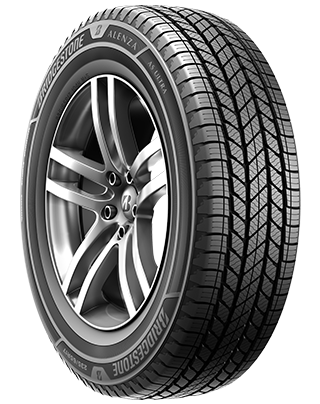
- No warranty
- All-Season
- Light Truck Tires
 Dueler A/T Revo 3
Dueler A/T Revo 3
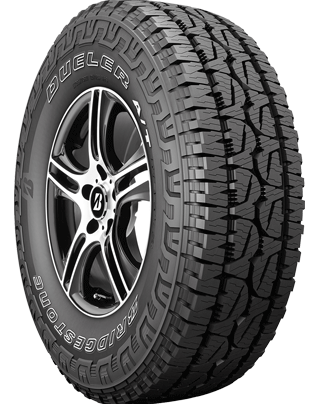
- Platinum Pact Limited Warranty
- All-Season
- Light Truck Tires
 Dueler H/T 684 II
Dueler H/T 684 II
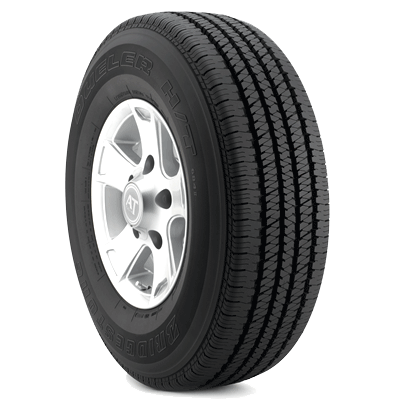
- Platinum Pact Limited Warranty
- All-Season
- Light Truck Tires
 Dueler A/T RH-S
Dueler A/T RH-S
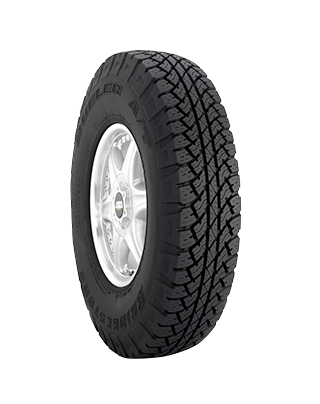
- Platinum Pact Limited Warranty
- All-Season
- Light Truck Tires
 Dueler H/T 685
Dueler H/T 685
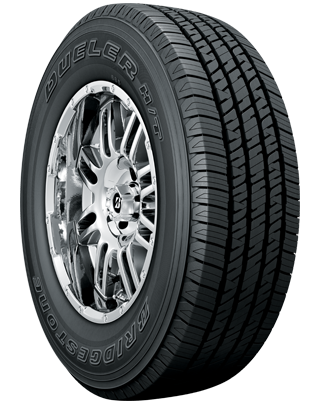
- No warranty
- All-Season
- Light Truck Tires
 WEATHERPEAK
WEATHERPEAK
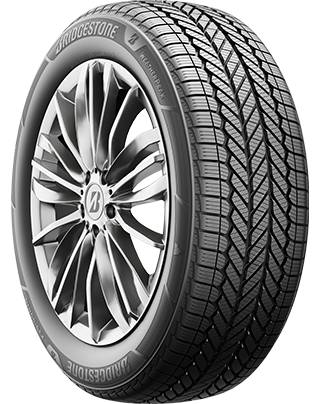
- Platinum Pact Limited Warranty
- All-Season
- Passenger Tires
 Blizzak DM-V2
Blizzak DM-V2
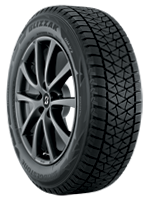
- No warranty
- Winter
- Winter
 DriveGuard Plus
DriveGuard Plus
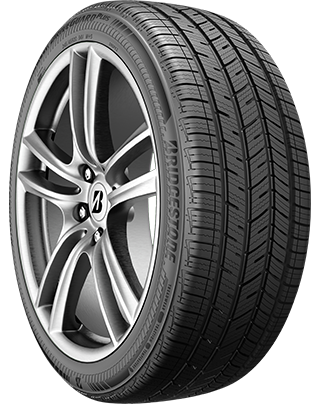
- Platinum Pact Limited Warranty
- All-Season
- Performance
 Dueler H/L Alenza
Dueler H/L Alenza
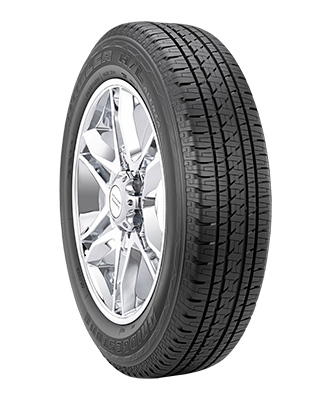
- Platinum Pact Limited Warranty
- All-Season
- Light Truck Tires
 Dueler H/L Alenza Plus
Dueler H/L Alenza Plus
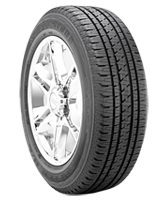
- Platinum Pact Limited Warranty
- All-Season
- Light Truck Tires
 Destination LE3
Destination LE3
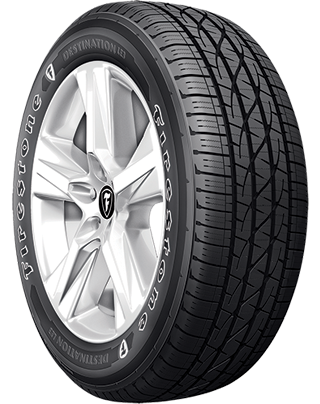
- No warranty
- All-Season
- Light Truck Tires
 Destination A/T2
Destination A/T2
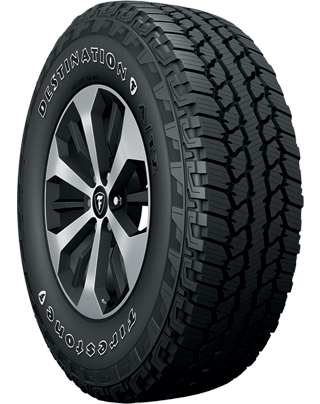
- Gold Pledge Limited Warranty
- All-Season
- Light Truck Tires
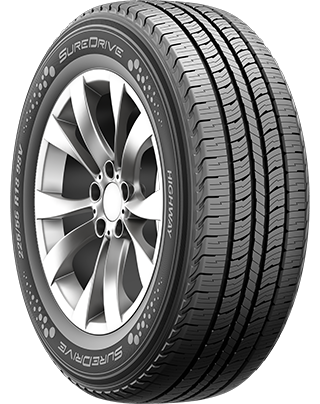
- No warranty
- All-Season
- Light Truck Tires
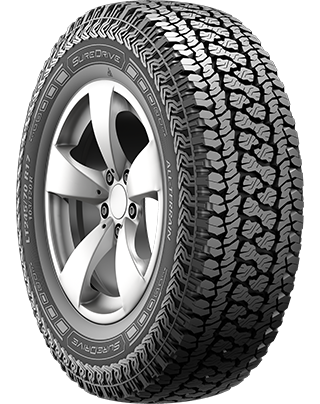
- No warranty
- All-Season
- Light Truck Tires
 OPEN COUNTRY R/T
OPEN COUNTRY R/T
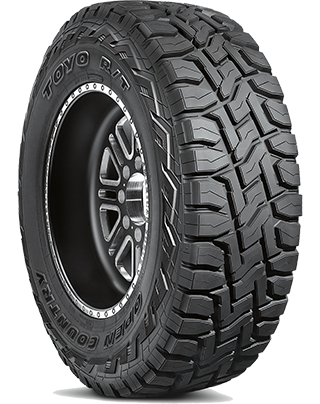
- No warranty
- All-Season
- Light Truck Tires
 PROXES ST III
PROXES ST III
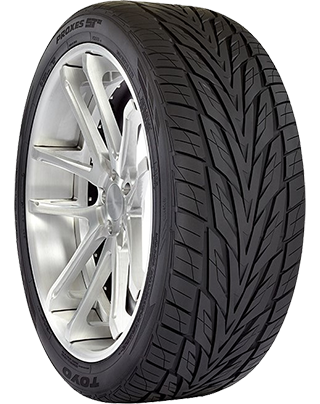
- No warranty
- All-Season
- Light Truck Tires
About 2017 Toyota Tundra Tires
Beyond the correct tire size, you also want to consider a handful of other factors when buying new Toyota Tundra tires like where and how you drive, and what tire brand you trust most. When evaluating your driving conditions, think about where you live (countryside vs. city vs. mountains) and the kind of unexpected weather you're likely to experience. It's not uncommon for drivers in states that experience all four seasons to buy more than one set of tires. one for summer and one for winter. Other drivers buy one set of all-season tires instead. That way they don't have to return to the tire shop and their vehicle is always ready for sun, rain, and light snow!
Driving style is next on the list to think about when buying tires. If you're a big off-roading fan who forges paths where others can't, you have very different needs than a long-distance commuter who sticks to the highway. Browse Toyota Tundra tires online or come to your nearby Firestone Complete Auto Care for help selecting the tire that's right for you.
Toyota Tundra Installation and More
Firestone Complete Auto Care has been a leading tire provider for more than a century. We're a tire store that also offers professional tire installation, maintenance, and rotation, along with complete auto care. Shop 2017 Toyota Tundra tires online and schedule an installation appointment.
2017 Toyota Tundra Tire Q&A
-
Why check Toyota tire inflation? Even a tiny decrease in tire pressure could impact your safety and fuel economy. Maintaining proper tire pressure can help increase fuel economy, improve braking time, and boost tire lifespan.
-
Why are there numbers on the side of my Toyota Tundra tires? Your tire sidewall numbers tell you the recommended load carrying capacity, speed rating, treadwear, traction, and tire size. Talk to a tire technician to learn how to read Toyota tire numbers.
-
Is there an easy way to check Toyota tire tread depth? Stay on top of your tire tread depth to help avoid a dangerous drive. You can check tread depth with a penny. Hold the penny so that Abraham Lincoln is facing you, then place your penny into a tread groove upside down. If you can see the top of Abe’s head, your tread is shallow and it might be time for new Toyota Tundra tires. Grab a penny. Hold the so that Abe Lincon's head is facing you and his hair is pointing toward the ground. Then, place the penny into a tread groove. If you can see the top of Abe’s head, your tread is shallow and it might be time for new Toyota Tundra tires.
2017 Toyota Tundra Repair
When to repair, when to replace? Click on a repair below to learn more about Toyota Tundra repairs at Firestone Complete Auto Care.
About 2017 Toyota Tundra Repairs
For most drivers, the words “car repair” don’t exactly spark excitement. But at Firestone Complete Auto Care, we strive to give you the excellent repair experience you deserve. When you come to us for 2017 Toyota Tundra repair services, rest easy knowing that your Tundra is in capable hands. We’ll start by assessing what repairs may be needed, and we’ll provide you with a detailed explanation of what we recommend. We’ll never recommend a repair we don’t think is necessary for your safety or the performance of your Toyota.
What Will Toyota Tundra Repairs Cost?
The cost to repair your 2017 Toyota Tundra depends on the type of repair, costs of replacement parts or repair supplies, the labor involved, and where you live. But no matter your location, you may be able to save money with one of our many auto repair coupons or offers.
A few different aspects can influence repair costs for your 2017 Toyota Tundra, like
2017 Toyota Tundra Auto Repair Questions
-
Do I still need scheduled maintenance even when nothing is wrong with my Toyota? Don’t neglect scheduled maintenance. Sure, you could skip out on a few recommended maintenance services, but you may pay the price later. Bring your vehicle to Firestone Complete Auto Care at recommended service intervals to address minor issues before they get out of hand and keep your car running newer, longer.
-
What's wrong if something feels 'off' in my Toyota? No, we’re not talking about finding the best jams on the radio! You know your car best, and you’re the first person who will notice if something doesn’t feel right (like new smells, sights, or sounds coming from your car). If you sense that something is 'off,' stop in for a Courtesy Check to have these symptoms checked out ASAP. Early action could help you prevent Toyota Tundra repairs.
-
Do I have to get the repairs you recommend for my Toyota? Trust is more than just a saying on the wall. It’s a window underneath it. That’s why we won’t recommend services or repairs for your 2017 Toyota Tundra unless we think they’re vital to your safety on the road.
Get Your 2017 Toyota Tundra Brakes Fixed
Your Toyota Tundra may be powered by a strong engine. But if you can’t brake, it might as well be scrap metal. If you’re experiencing squeaky brakes or a loss of braking power, don’t wait! Unresponsive brakes make it tough to give the road your best. What's more, waiting for things to figure themselves out can result in more damage to your brakes and your wallet. Visit Firestone Complete Auto Care for the right brake repair for your 2017 Toyota Tundra. We offer many affordable brake repairs like brake pad/shoe replacement, brake rotor/drum refinishing, brake fluid exchange, and wheel cylinder and brake caliper installation.
Answers to Your Tundra Brakes Questions
-
What is causing my Tundra to shake when I brake? If your Tundra shakes when you brake, you could be dealing with warped rotors, faulty brake calipers, worn brake pads or rotors, or loose or worn suspension parts. Schedule a free brake inspection at Firestone Complete Auto Care for help diagnosing your brake issue.
-
What is the average lifespan of Tundra brake pads? You can usually get around 30,000 to 40,000 miles out of your brake pads, but how and where you drive your Tundra can affect this. Hauling large loads or riding your brakes can shorten their lifespan, while smoothly braking and mostly sticking to highways can help your brake pads last longer.
-
Should my Tundra be leaking brake fluid when the car is off? Your Tundra brake system is a closed hydraulic system, so a brake fluid leak likely means you have an issue in your brake system. Over time, brake components can wear out or get damaged, causing a brake fluid leak.
When to Get Toyota Tundra Drivetrain Repairs
You don't want to go to just anyone for drivetrain repair. Drivetrains for front, rear, and all-wheel-drive and 4WD vehicles are all different. You want to go to Firestone Complete Auto Care. We can fix many 2017 Toyota Tundra drivetrain components Your Toyota Tundra may need driveshaft attention if you feel resistance when turning, heavy vibrations in your floorboards, clunks when shifting, or vibration as your vehicle accelerates.
2017 Toyota Tundra Drivetrain Questions
-
What are the symptoms of a damaged Toyota drivetrain system? Noises toward the back of your Toyota Tundra, leaking fluid, trouble turning — these could all be signs of drivetrain damage you want to address. Take action before something more severe happens.
-
Why is my Tundra malfunction indicator light (MIL) on? If your Tundra has its malfunction warning light (more commonly called the check engine light) illuminated, it could indicate engine troubles, problems with the transmission, electrical issues, malfunctioning sensors, connector problems, or misfire issues.
-
Is a drivetrain malfunction in my Tundra serious? If your Tundra has a drivetrain malfunction, don't wait. Get it checked out by a professional mechanic. Identifying the underlying cause and performing the appropriate repairs right away can help prevent further damage and avoid unsafe driving conditions.
Wheel Alignment for 2017 Toyota Tundra
Alignment services involve precise adjustments to your Toyota Tundra’s suspension system, which serves to attach your wheels to your vehicle. During the service, your tire angles are adjusted according to measurements recommended by Toyota. Why? So that your tires can make contact with the road at the best possible angle. When you bring in your 2017 Toyota Tundra, we’ll perform an alignment check first. After that, we can adjust your wheel alignment angles until they match Toyota’s recommended measurements.
Toyota Tundra Alignment Questions
-
Are there road conditions that can hurt my Toyota Tundra alignment? When it’s safe to do so, avoid driving over potholes or hitting curbs. These road obstacles can wreak havoc on your wheel alignment, as can wear and tear from rough road conditions.
-
How frequently should you get a wheel alignment for your Tundra? Typically, your alignment should be checked every 6,000 miles or 6 months, whichever comes first. Double-check your Tundra owner’s manual for Toyota's exact recommended schedule.
-
Does getting new Tundra tires mean you need an alignment? You likely aren't required to get an alignment when you put new tires on your Tundra, but it's a super smart idea! An alignment can help ensure optimal tire wear, fuel efficiency, and handling. Still, you should reference your Tundra owner’s manual for what’s recommended.
Engine Repairs for Your 2017 Toyota Tundra
If your 2017 Toyota Tundra needs engine repair, our technicians will provide you with a thorough explanation beforehand. We make recommendations, but you make the final decision. If a repair can wait, we'll let you know. We'll also tell you if it's necessary for your safety. We want to provide you with the information you need to make an informed engine repair decision. Choose Firestone Complete Auto Care for Toyota Tundra engine repairs and you can drive easy knowing that we use Toyota-approved parts and fluids — timing chain or belt, engine oil seal, fuses, or a different component.
Engine Q&A 2017 Toyota Tundra
-
Why does my Tundra’s check engine light come on when I start it? Generally, your check engine light turning on upon ignition is not a bad thing. It’s just your Tundra firing up its circuits. The light should turn off in a bit, but come see us if it doesn't.
-
Why is my Toyota Tundra making engine noise? Unusual noises can signal a problem with your Toyota Tundra engine. Tapping or knocking could mean you're low on oil. Whistling could mean a belt is misaligned or there's an intake leak. Squealing can indicate a loose fan belt, and grinding might be coming from the brakes, not the engine.
-
What could damage a Toyota engine? Certain driving habits can damage your engine and should be avoided. These habits include 'running on fumes,' revving the engine while still in Park, or pushing 'the pedal to the metal' before the engine has warmed up. Help sustain your engine’s performance and efficiency by staying miles away from these bad driving practices.
Tire Repair for Your 2017 Toyota Tundra
If the road has been rough on your 2017 Toyota Tundra tires, Firestone Complete Auto Care can help. Our tire technicians can determine whether it's safe to plug and patch the tire, or whether it needs to be replaced. To start, we’ll consider the location of tire damage, the type of issue, the size and scope of the damage, and the amount of wear on your tires.
If a repair on your 2017 Toyota Tundra tire is feasible and safe, we'll follow three basic steps to repair it: (1) Remove the tire from the wheel for inspection and repair, (2) fill in the area that’s been punctured to prevent damage from moisture, and (3) seal the inner liner with a repair unit to prevent air loss.
Your Questions About Toyota Tundra Tire Repair, Answered
-
What happens if I drive my Toyota on a flat tire? Driving on a flat tire is not a good idea. Your Tundra engine will keep running with a flat tire, but you could damage your wheel by continuing to drive on a flat.
-
Is temporary sealant bad for my Toyota's tires? Fast fixes are a mixed blessing. They’ll help you get your Toyota Tundra to Firestone Complete Auto Care, but don’t count on them to keep you on the road for very long. Using a temporary sealant may also void a Bridgestone or Firestone tire warranty.
-
What is causing the tires on my Tundra to keep losing air? Possible reasons for your Tundra tires continuously losing air include a leaking valve steam, wheel damage, and a puncture or hole in the rubber.
Maintenance for Your 2017 Toyota Tundra
Take care of your Toyota Tundra and it'll take care of you. With the right maintenance at the right time, your Tundra has a good chance of hitting 200,000 miles or more.
2017 Toyota Tundra Maintenance Schedule
What is the manufacturer recommended maintenance schedule for a 2017 Toyota Tundra? Find maintenance info for your vehicle.
About 2017 Toyota Tundra Scheduled Maintenance
Instead of waiting for an issue to arise with your Tundra, you can stay ahead of problems before they even begin. Just follow your 2017 Toyota Tundra maintenance schedule! Toyota knows your vehicle inside and out (they made it, after all!), so they’ve designed this schedule with your car’s unique needs in mind. Scheduled maintenance services can vary depending on driving conditions, climate, and other factors; however, there’s a good chance that your vehicle’s recommended maintenance services will include fluid exchanges, filter changes, new brake pads, oil changes, and tire rotations. Staying on track with routine service appointments can help your Tundra perform better, decrease your risk of dangerous malfunctions on the road, and help you avoid expensive repairs caused by 2017 Toyota Tundra problems later.
Learn About Vital Maintenance Needs for Your Toyota Tundra
Head to your nearest Firestone Complete Auto Care in your 2017 Toyota Tundra for factory-recommended routine maintenance and our technicians will jump right in with a Courtesy Check. This Courtesy Check can establish a baseline of what may need to be addressed during your service appointment. During a Courtesy Check, we’ll always check your battery, then we’ll move on to inspect your Tundra’s head and tail lights, tires, fluid levels, alignment, and windshield wipers.
Firestone Complete Auto Care is your spot for 2017 Toyota Tundra maintenance. Don’t wait until something goes wrong with your car. Visit your nearest location for proactive maintenance today.
2017 Toyota Tundra Maintenance Q&A
-
What should I do after hitting a pothole in my Toyota Tundra? Check your car for pothole damage! If you’ve recently hit a pothole (or even if you don’t remember hitting one… they can be sneaky!) check your tire treads, tire sidewalls, and wheels for damage. Potholes can also knock your car out of alignment, so have your alignment checked if you suspect you’ve driven over a rough patch of road lately.
-
When does my Toyota Tundra need high mileage oil? Got 75,000+ miles on the odometer? Consider high mileage motor oil. High mileage oil is formulated to address the specific problems encountered by high mileage vehicles, or those with more than 75,000 miles. It can help reduce oil consumption, smoke, and emissions from older Toyota Tundra engines.
-
Why are my Toyota dashboard lights on? Because there might be a problem under the hood. Those warning lights are there for a reason! As soon as you notice that one’s illuminated, take your Toyota Tundra to Firestone Complete Auto Care so you can address any small problems long before they worsen.
The Right Battery Size for a 2017 Toyota Tundra
Need more info about Toyota Tundra batteries?
| Battery | Engine | Warranty | Cold Cranking Amps | |
|---|---|---|---|---|
| 24F-3 | V8/4.6L | Replacement 24 months | Performance months | 650 |
| 35-2 | V8/4.6L | Replacement 36 months | Performance months | 640 |
| 24F-RP | V8/4.6L | Replacement 48 months | Performance months | 750 |
| 24F-3 | V8/5.7L | Replacement 24 months | Performance months | 650 |
| 35-2 | V8/5.7L | Replacement 36 months | Performance months | 640 |
| 24F-RP | V8/5.7L | Replacement 48 months | Performance months | 750 |
Car Batteries for 2017 Toyota Tundra
The average car battery lasts three to five years. You want to replace your 2017 Toyota Tundra battery before it fails and leaves you stranded. Pay attention to clues that your battery is on its way out. A sluggish engine start, an illuminated battery or check engine light, bloated battery case, corroded battery terminals, and subpar electrical performance can all be signs that your battery is waving goodbye.
Plus, at Firestone Complete Auto Care, we’ll test your battery for free. Visit us for a complimentary battery check and, if needed, a replacement battery for your 2017 Toyota Tundra. Automotive batteries are just one of our many areas of expertise. Our technicians are well-acquainted with Toyota’s service specs for Tundra car batteries’ reserve capacities and cold cranking amps. Get help identifying the type and size of battery that matches your vehicle, and schedule an appointment today for a quick car battery replacement.
Commonly Asked Toyota Tundra Battery Questions
-
Why won’t my Toyota Tundra battery hold a charge? A car battery that needs to be jump-started every time is as good as dead. It may be getting old. Or, you’ve been leaving the doors slightly open and the dome lights on during the night. Stop in for a free battery check at your nearest Firestone Complete Auto Care and learn more about your battery's charge.
-
How long can I expect my car battery to last? A car battery normally lasts three to five years, but this number can vary based on battery type, your driving habits, and battery maintenance.
-
Why is there white, crusty buildup on my Tundra’s battery post? A chemical reaction between battery acid and the air can cause a white, crusty buildup to form on the terminals of your Tundra car battery. This buildup — known as corrosion — can impede the flow of electricity and cause a range of issues, from poor performance to premature battery failure.
2017 Toyota Tundra Oil Change Service
Your 2017 Tundra’s oil should be changed according to Toyota’s recommended oil change intervals. Your Tundra may need an oil change right away if your check engine/oil change light is on, you hear engine knocking, sense an oil smell in the cabin, or notice an unusual amount of exhaust. You might need an oil change more frequently than what’s recommended by Toyota if you regularly haul heavy loads, frequent dusty roads, enjoy off-roading, or drive at low speeds for long distances.
Whether you need high mileage oil, synthetic oil, or conventional oil, you'll find the right 2017 Toyota Tundra motor oil at Firestone Complete Auto Care. Consult Toyota's recommendations to select the right 2017 Tundra oil and talk with a teammate to learn more about our oil options: Quaker State® Advanced Durability™ conventional oil, Pennzoil® High Mileage Vehicle® motor oil, Pennzoil Platinum® Full Synthetic motor oil with PurePlus™ Technology, and Shell Rotella® heavy-duty engine oil. During an oil change, a technician will change your Tundra's oil, replace and recycle the old oil and filter, inspect the rest of your car’s filters, top-off essential fluids, and visually inspect the rest of the vehicle. Let the experts take care of your Tundra’s engine by making an oil change appointment today.
2017 Toyota Tundra Oil Change Questions
-
What does it mean if my Toyota Tundra oil light comes on? If you’re overdue for an oil change, it might trigger your Toyota Tundra oil change reminder light. If the oil pressure light is illuminated, it could be due to low engine oil, a failing oil pump, a malfunctioning oil pressure sensor, or a clogged oil filter.
-
Can I change my Toyota Tundra oil at home? Changing your own oil isn't as convenient as you might think. It requires special tools and old oil must be disposed of properly. Having your oil professionally changed reduces the chances of something going wrong with the oil change, but also with your vehicle down the road.
-
Why is my Toyota exhaust smoke gray or blue? Your engine could be burning oil due to a leak. It may be time for a pro to take a look. A leak can be caused by a variety of issues including faulty valve seals, blown piston rings, or damaged cylinder walls.
2017 Toyota Tundra Tune-Up & Engine Service
Regular engine tune-ups can optimize your Tundra’s power on the road. The Firestone Complete Auto Care location in your community offers several Toyota Tundra engine tune-up services. The standard Firestone Tune-Up is one service option. The standard Firestone Tune-Up includes new spark plugs (and installation!), a thorough inspection of engine components, and a lifetime parts warranty*. Another service option pays special attention to the filters in your Tundra. Specifically, we replace the fuel filter and air filter. Our third service is a thorough cleaning of the fuel system. During this type of tune-up, we use a three-step process to get rid of harmful varnish, dirt, and carbon deposit buildup in your Tundra’s fuel injectors, throttle body, and throttle plate. The result? Restored fuel system performance. Keep in mind that your Tundra's mileage and maintenance history can uniquely impact its tune-up needs. Talk to a technician about your driving style, mileage, and service history to learn more about your vehicle's specific needs.
*Ask a Firestone Complete Auto Care teammate about full terms and conditions for warranties.
Questions About 2017 Toyota Tundra Engine Tune-Ups
-
What happens if my Toyota Tundra spark plugs fail? Replace spark plugs on time or about every 30,000 miles or so. Without the spark of electricity created by spark plugs, your engine doesn’t have the combustion it needs to start — which could leave you stranded on the road. Always replace your spark plugs on time based on Toyota’s recommendations.
-
What should I do if I see leaks under my Tundra? Puddles could indicate an oil leak, coolant leak, or brake fluid leak– all of which can critically hurt your engine. Have your engine inspected as soon as you spot a pool of liquid in your usual parking spot.
-
How often do Toyota Tundra fuel injectors need to be cleaned? The cleaning schedule for vehicle fuel injectors varies depending on your driving conditions and the type of fuel you use. Some manufacturers suggest cleaning your fuel system as part of routine maintenance, while others will recommend it on an as-needed basis if you’re experiencing poor performance. Reference your Toyota owner’s manual for exact guidelines.
2017 Tundra Toyota Steering & Suspension Services
During the first few years you had your 2017 Toyota Tundra, you probably enjoyed a smooth and steady ride. Now, however, things are starting to feel a little rough. Perhaps your Tundra feels bouncy, pulls to one side, or makes noise whenever you turn or drive over a speed bump. As soon as you notice that something’s “off” with your 2017 Toyota Tundra, bring it in for steering and suspension services. We'll get to the root of the problem and, if steering and suspension service is needed, we'll explain all of your options and the potential cost.
2017 Tundra Steering & Suspension Q&A
-
What can cause my Toyota Tundra to have a bouncy ride? Excessive bouncing in your Toyota Tundra might be due to damaged struts or shocks that are unable to absorb road bumps effectively, causing your vehicle to feel more like a pogo stick than a smooth ride.
-
Why does my Tundra's nose dive down when I hit the brakes? The forward momentum and weight transfer to the front wheels during braking can cause your Tundra's front end to dip forward. A damaged or faulty suspension system may fail to distribute the weight and force effectively, causing the front end to dip even more.
-
What role do tire pressure and tread depth play in my Toyota's suspension? Proper tire care can reduce strain on the suspension system, and also alert you to the need for new tires. Uneven tire wear is one sign of steering and suspension system problems, but it can also contribute to more.
Convenient & Local 2017 Toyota Tundra A/C Service
Technicians at Firestone Complete Auto Care are ready to help you address your 2017 Toyota Tundra A/C problems. In this A/C performance inspection, we’ll check out the current condition of your 2017 Toyota Tundra A/C system to see if repair work is required. We’ll test overall system performance, check for any leaks, and measure the system pressure.
When we perform an A/C repair on your 2017 Toyota Tundra, we’ll also do an A/C evacuation and recharge. To start this process, a technician will flush out the old refrigerant from your vehicle’s A/C system. Next, they will evacuate the system according to Toyota's recommendations. To finish, we’ll add new refrigerant to recharge the A/C system.
Frequently Asked Questions for 2017 Toyota Tundra A/C Systems
-
Why is my Tundra A/C blowing hot air? Maybe your A/C starts cool but then gets warm. Or maybe it never gets cold in the first place. Either way, your A/C troubles could be traced back to a clogged expansion valve, faulty compressor clutch, blown fuse, or leak.
-
What causes A/C system leaks? Over the years, the rubber seals and gaskets in your Tundra’s A/C system naturally degrade. Moisture can get into the system and cause a malfunction, or parts can simply wear out so that your system no longer seals properly.
-
Why won’t my Tundra’s A/C cool the vehicle when the car is stopped? Damaged or worn components in your Tundra’s electrical or air conditioning system can cause the A/C to only work when the car is moving. You may be dealing with low coolant or a faulty cooling fan.
Transmission Services for 2017 Toyota Tundra
Your transmission carries power from the engine to the wheels so that you can drive at the speed you desire. Since the transmission has to translate the precise amount of power for your desired amount of speed, a tiny transmission issue can take a major toll on your car’s performance. Toyota Tundra transmission problems can present themselves as shifting delays, grinding or jumping during acceleration, the car shaking at any speed, or whistling noises and a burning smell coming from under the hood. If you ignore Toyota Tundra transmission issues your could suffer a loss in fuel efficiency or find that your Tundra isn’t working at all. Our technicians know how to service your 2017 Tundra up to Toyota-recommended standards. As soon as you suspect something’s wrong with your Tundra’s transmission, book an appointment at your local Firestone Complete Auto Care to help keep your Toyota running for miles and miles.
2017 Toyota Tundra Transmission Questions & Answers
-
How often does my Tundra transmission fluid need to be checked? Regularly checking and exchanging your 2017 Tundra’s transmission fluid is one of the best ways to help the transmission system perform. Some technicians would say that between 30,000 and 60,000 miles is a good timeframe for having your Toyota's transmission fluid checked and replaced, but that timeline can vary depending on how your vehicle is used and your manufacturer’s recommendations. The good news is that transmission fluid leaks are affordable to repair and easy to spot.
-
Can transmission fluid leak from my Toyota Tundra? Yes, your Toyota Tundra can develop a transmission fluid leak. As your Tundra ages, parts of the transmission system might wear out or break down, leading to a leak and possible transmission issues. Common causes of transmission fluid leaks include worn seals, a damaged transmission housing, a loose or cracked transmission pan, an overfilled transmission, or faulty transmission lines.
-
Is it okay to drive a Tundra with a transmission fluid leak? You should avoid driving with a transmission fluid leak. Your transmission system relies on transmission fluid to operate properly, and a leak may decrease performance, cause your Tundra to overheat, or even lead to transmission failure.
Vehicle Inspection for 2017 Toyota Tundra
When you bring your vehicle to Firestone Complete Auto Care for any service, we’ll automatically do a multi-point Courtesy Check. To start, one of our technicians will check the battery in your Toyota Tundra to find out how much charge is remaining on it. The check will continue with a visual inspection of your Toyota Tundra's filters, lights, wiper blades, hoses, alignment, tires, fluid levels, and belts.
Every service performed at your nearest Firestone Complete Auto Care will include a Courtesy Check, but we also offer an in-depth Complete Vehicle Inspection for your 2017 Toyota Tundra. During a Complete Vehicle Inspection, we’ll visually check everything that’s on the list for a Courtesy Check. Additionally, we’ll perform an examination (by hand!) of your steering, suspension, brakes, and exhaust system. This inspection is aimed at informing you of any major problems that could wreak havoc on your 2017 Toyota Tundra if left unaddressed.
Depending on your location, you may be able to complete your vehicle’s safety tests or state inspection at your nearest Firestone Complete Auto Care. These inspections are governed by state automotive laws and may vary in different locations.
FAQs for 2017 Toyota Tundra Vehicle Inspections
-
How do I know if I should have an inspection on my Toyota Tundra? If you’ve noticed something that doesn’t feel quite right in your car lately, a Courtesy Check could give you peace of mind. We can help you get to the bottom of strange engine noises, a jerky steering wheel, or an engine that's hard to start.
-
My 2017 Toyota Tundra failed the state inspection test. Can you fix it? Did your vehicle fail a recent state inspection test? We can help. Come in for a checkup and we’ll diagnose the issue.
-
When is the best time to get a complete vehicle inspection for my Toyota Tundra? The best time to have a complete vehicle inspection done on your Toyota Tundra is when you notice something is off but you can’t locate the issue yourself. Schedule an inspection if you experience any unusual symptoms, such as unfamiliar dashboard indicators, strange engine noises, or steering changes. An inspection can be especially beneficial before a road trip for the simple peace of mind. You can feel confident in your adventure!
2017 Toyota Tundra Radiator Repair & Service
Staying on top of routine radiator maintenance for your 2017 Toyota Tundra is crucial to keep your engine in the best possible shape for years to come. Toyota recommends that you replace coolant (also called antifreeze) at certain intervals, but it’s a good idea to keep your eyes open for any indication that your radiator is failing. You could be on the verge of a radiator-induced engine breakdown if you see coolant leaks under your car, high engine temperatures, or a dashboard light that indicates low coolant.
At Firestone Complete Auto Care, we start by performing a thorough inspection of your Toyota Tundra cooling system. Then, we’ll move on to a machine-powered coolant exchange. Finally, we’ll refill the flushed sealants, lubricants and chemicals, then do a pressure check to catch any possible leaks. If you’re about to lose your cool over a too-hot engine, rest assured that your 2017 Toyota Tundra is in good hands at Firestone Complete Auto Care.
2017 Toyota Tundra Radiator Q&A
-
What does the coolant light on my Toyota dashboard mean? Your engine might be about to overheat. If your low coolant light is on, pull over in a safe area and wait for your engine temperature to go down. Once it’s safe to do so, bring your car to your nearest Firestone Complete Auto Care to have the coolant system inspected.
-
What can cause my Tundra to overheat? Low coolant, a damaged cooling fan, a faulty water pump, a malfunctioning thermostat, or a clogged radiator could all cause your Toyota Tundra engine to overheat.
-
What is making my Tundra radiator sound like it’s boiling or rumbling? Your Tundra’s cooling system could contain air pockets or your radiator might be clogged. Another possibility is a faulty radiator cap, which is an easy fix!